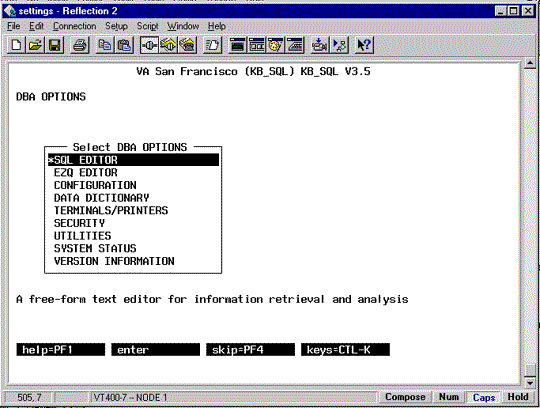
The first piece is the M based server application called KB_SQL. KB_SQL is written in M and is installed in your M environment. It has a menu driven interface and is pictured below:

The SQL Editor (or the EZQ Editor) is where you write your SQL queries. You can run the queries from the editor for testing purposes and you can also save the queries as Stored Procedures that are called through the ODBC. The advantage of using stored procedures is that they are only compiled at the time they are saved which saves processing time when the query is called from the application through the ODBC driver.
The Configuration Menu is where you set up your server information; what IP address your running on and what server port you are listening on. You also set up listening ports, generally twice as many as you have user licenses (2 x 8 users = 16 listening ports). The Configuration Menu also contains the FUNCTION EDIT Menu. I found functions useful to jump out of KB_SQL to M routines to perform various tasks (i.e. calling XUSRA to validate VISTA Access and Verify Codes.).
The Data Dictionary Menu is used to view the KB_SQL Data Dictionaries.
The Terminal/Printers Menu is used to set up the VISTA printers within KB_SQL.
The Security Menu is were you can set up users and/or groups to grant access permissions and KB_SQL user id's and passwords.
The Utilities Menu contains numerous KB_SQL utilities. I have found the most useful tool to be the Transaction Log option which contains the KB_SQL error logs. The error logs are extremely useful when debugging your SQL queries.
The System Status Menu monitors your system status. It is also where you notify the server that you are ready to accept connections.
The Version Information Menu tells you what version of KB_SQL you are running and also shows you the Number of Users you are currently licensed for.